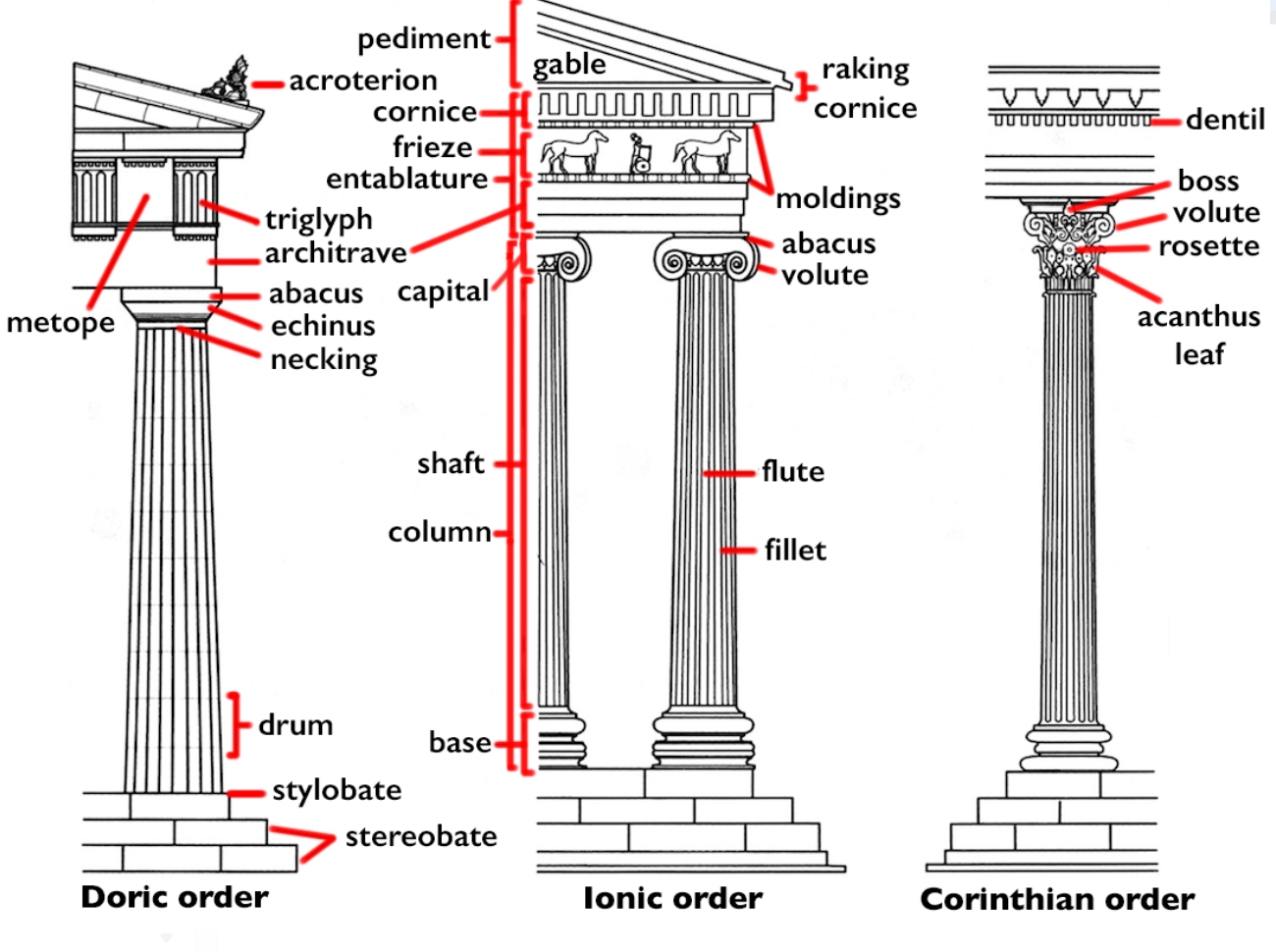Greek Architecture Review
1/10
There's no tags or description
Looks like no tags are added yet.
Name | Mastery | Learn | Test | Matching | Spaced |
|---|
No study sessions yet.
11 Terms
Three Orders
Doric, Ionic, Corinthian
Items of the Order
Entablature
Cornice
Frieze (sometimes covered in sculpture)
Architrave or Epistyle
Column
Capital
Shaft, Flutes (vertical lines in shaft)
Base
Stairs AKA Base
Stylobate
Stereobate

Vitruvius
Roman architect, 1st century CE, wrote 10 books on architecture and took Greek architecture to focus on how they concieved their architecture. Laid out principles of architecture, like the 3 orders (doric, ionic, corinthian).
Triglyph
Fluted section of a doric frieze
Metope
Blank section of the frieze
Megaron
A room of worship, commonly with columns on the exterior and a hearth on the inside for worshipping
Very ancient
One room
King offered sacrifices to God inside
Cella
Greek for shrine, such as The Parthenon
People offer the sacrifices outside
Megaron evolved into the Cella after hundreds of years
Peristyle, Peripteral Temple
A building with columns along the periphery (perimeter) of its exterior
Entasis
The application of a convex curve to a surface for aesthetic and technical purposes, usually found on columns
Trabeated Architecture
AKA Post-&-Lintel
Horizontal (lintel) elements are held up by strong vertical (post) elements with large spaces in between them.
The Parthenon, c. 447 - 438 BCE
Peripteral temple in Athens, Greece, rebuilt in the mid-5th century
Dedicated to the goddess Athena with a Cella where a statue of the goddess would be placed
Symbol of wealth, victory, and sophisitcation with architecture of the Doric order (ex. baseless columns)
Sculptures with naturalistic forms, idealized human figures, dynamic movement, and attention to anatomy with balance all through the temple, especially in the Metopes, Frieze, and Pediments.
Ex: Metope from a Frieze in the Parthenon showing Lapith and Centaur